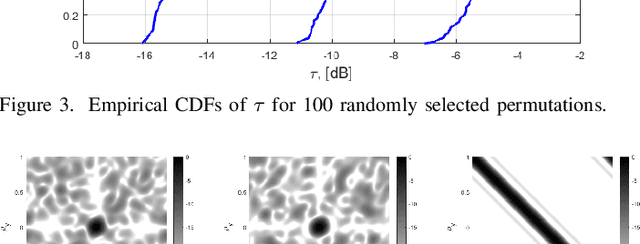Jose Flordelis
Mix-and-Conquer: Beamforming Design with Interconnected RIS for Multi-User Networks
Jul 15, 2024



Abstract:We propose a new reconfigurable intelligent surface (RIS) structure, referred to as interconnected RIS (I-RIS), which allows the RIS elements to be interconnected and share the incident signals using simple binary radio frequency (RF) switches and mix them into the reflecting signals. This structure enables multi-user scaling and requires fewer elements (i.e., a compact structure) compared to standard RIS (S-RIS), which assumes no interconnection between the elements. The I-RIS compact design makes it practical for deployment on space-limited nodes, e.g., unmanned aerial vehicles (UAVs). Hence, in this work, we propose a beamforming design based on I-RIS in a multi-user network, where we use binary RF switches as RIS elements. We show that our switch-based I-RIS offers a higher gain compared to an S-RIS using phase shifters. Finally, we introduce two optimization methods, sigmoid filled function (SFF) and semi-definite binary optimization (SBO), to optimize the RIS elements and evaluate their performance in terms of sum-rate and complexity.
Spatially Selective Reconfigurable Intelligent Surfaces Through Element Permutation
Mar 06, 2024



Abstract:A standard reconfigurable intelligent surface (RIS) can be configured to reflect signals from an arbitrary impinging direction to an arbitrary outgoing direction. However, if a signal impinges from any other direction, said signal is reflected, with full beamforming gain, to a specific direction, which is easily determined. The goal of this paper is to propose a RIS which \emph{only} reflects signals from the configured impinging direction. This can be accomplished by a RIS architecture that permutes the antenna elements in the sense that a signal is re-radiated from a different antenna than the one receiving the signal. We analytically prove this fact, and also discuss several variants and hardware implementations.
 Add to Chrome
Add to Chrome Add to Firefox
Add to Firefox Add to Edge
Add to Edge